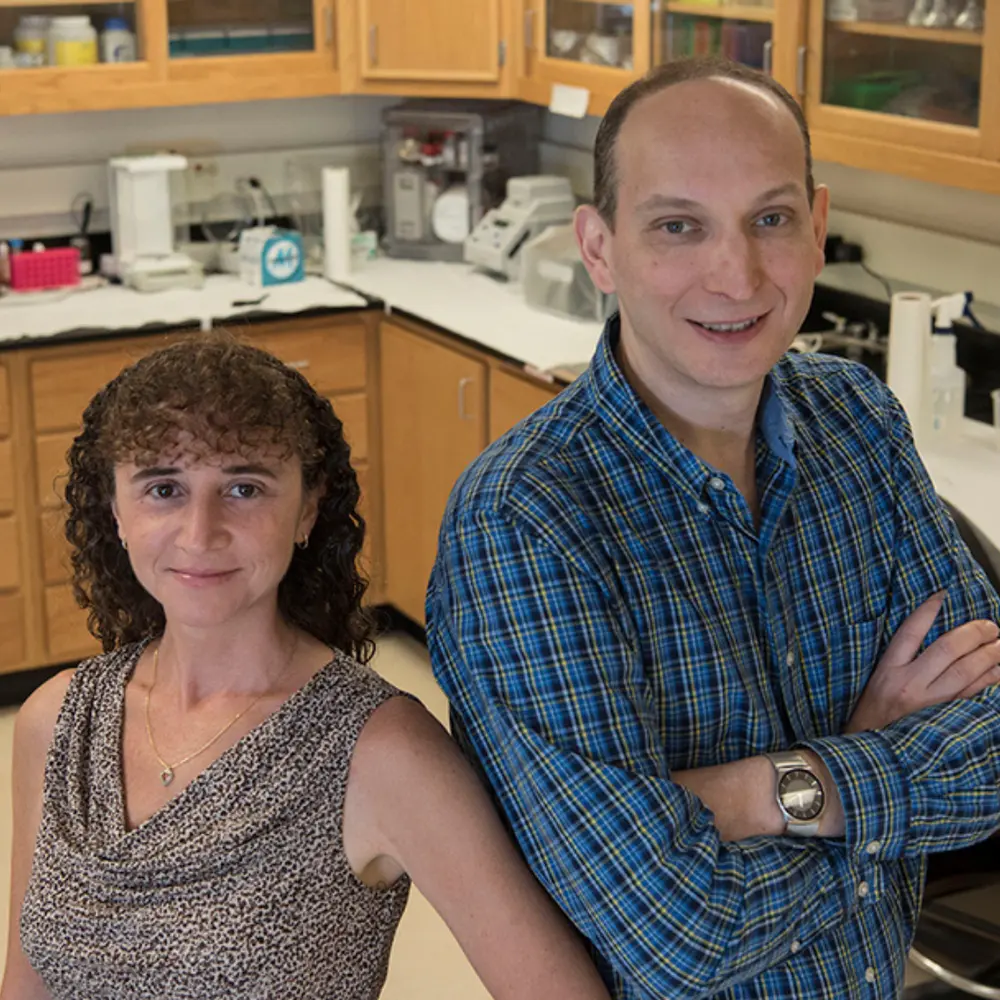
Cells communicate with each other by sending, receiving, and decoding signals. Signals that cannot cross the cell membrane directly – such as ions, water-soluble small molecules, and peptides – need to be detected by receptor proteins on the cell’s outer surface.
Among the most important classes of receptors are the “Cys-loop” receptors. Members of this superfamily of membrane proteins are responsible for fast communication between neurons. Dysfunction of these receptor channels has been associated with a range of human pathological conditions including autoimmune and congenital motor diseases, epilepsy, mood disorders, schizophrenia and Alzheimer’s disease. Furthermore, some of the most commonly used prescription drugs, such as diazepam and anesthetics, and recreational drugs, such as ethanol and nicotine, are mediated by Cys-loop receptors in the central nervous system.
Though Cys-loop receptors are of great importance, many questions remain about how they work. In a new paper published in PNAS, University of Illinois Urbana-Champaign researchers Gisela Cymes and Claudio Grosman used mutagenesis, patch-clamp electrophysiology and radiolabeled-ligand binding experiments to study how the two domains of the protein interact and work together.

Cys-loop receptors are composed of two separate modules: the extracellular domain, or ECD, which harbors the signal-binding sites; and the transmembrane domain, or TMD, which forms a channel through the membrane that can be alternately “open” or “shut.” When merged together in a single protein, the conformations of these two domains depend tightly on each other. Upon binding a signal molecule, the exterior receptor changes shape, inducing the transmembrane domain to concurrently change shape and open the pathway through the membrane.
The question as to how the coupling of these two separate domains takes place has attracted the attention of researchers for several decades. Proposed mechanisms differ, but they all converge into the idea that interactions across the interface between the domains are crucial for this phenomenon. The successful design of fully functional chimeras that combine ECD and TMD modules from different Cys-loop receptors has often been ascribed to the residual conservation of amino acid sequence that exists at the interface, even between evolutionarily distant parent channels.
However, in contrast to current models, the authors found that proper channel formation in these receptors does not require conservation of sequence – or even physicochemical properties – across the ECD-TMD interface.
The authors propose that function in these receptor-channels requires that the overall structure of the interfacial “loops” be conserved, rather than their sequence. The relative orientation and distance also must be close enough for changes in one side to result in changes in the other, in a phenomenon akin to the nonspecific “bumping” of closely apposed domains.
The authors state, “wild-type ECD and TMD side chains undoubtedly interact with their surroundings, but the interactions between them – straddling the interface – do not seem to be more important for gating than those occurring elsewhere in the protein.”

